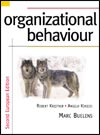

 Organisational Behaviour: European Edition, 2/e Motivation through Equity, Expectancy and Goal Setting Self-test Questions - Quiz 1 |

 2002 A McGraw-Hill Online Learning Centre
2002 A McGraw-Hill Online Learning CentreAny use is subject to the Terms of Use and Privacy Policy.
McGraw-Hill Education Europe is one of the many fine businesses of The McGraw-Hill Companies.